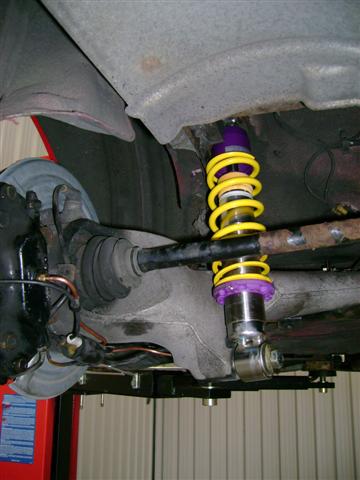Neil Haughey
New member
I will be doing similar when my GAZ set is fitted by my brother in a couple of weeks time. I have read up on the net and it seems that if we index 4 splines anti-clockwise on the inner end and 4 splines clockwise on the outer end we should theoretically get the correct drop to keep the suspension in the same place I had before (car already lowered a lot at rear). This should drop the car very roughly 1.5" which is 1/2" to compensate for the weight reduction and an inch for the coilovers extra spring rate over the 27mm torsion bars. TBH I am tempted to just index round 1 spline which gives a 9 degree change and then just set the height back up using the coilover adjustment, anyone done things this way and think is it a simpler way of doing things?
It isn't rocket science but the design of the rear suspension on our cars and the fact it uses torsion bars do not help at all, I designed a set of springs for one of my cars about 10 years ago and got it pretty much spot on without knowing either the free length or the rate of the original spring. I just had to calculate it using the mass of the car, suspension geometry and the length of the spring as on the car. I got the calculated drop correct to within 2 mm, not so confident on this car though I suspect a certain amount of trial and error.
Something else that worries me with the GAZ rears is of course no helper spring so perhaps the torsion bars need to be indexed round a lot to avoid the coil flopping about on lift. Having a soft helper gives one some room in this regard but as already mentioned surely the suspension is designed to be on the main spring only with the car sat level. True dual spring setups do not have mega soft helpers, AFAIK all of these systems with soft helpers exist to stop the main spring flopping about.
It isn't rocket science but the design of the rear suspension on our cars and the fact it uses torsion bars do not help at all, I designed a set of springs for one of my cars about 10 years ago and got it pretty much spot on without knowing either the free length or the rate of the original spring. I just had to calculate it using the mass of the car, suspension geometry and the length of the spring as on the car. I got the calculated drop correct to within 2 mm, not so confident on this car though I suspect a certain amount of trial and error.
Something else that worries me with the GAZ rears is of course no helper spring so perhaps the torsion bars need to be indexed round a lot to avoid the coil flopping about on lift. Having a soft helper gives one some room in this regard but as already mentioned surely the suspension is designed to be on the main spring only with the car sat level. True dual spring setups do not have mega soft helpers, AFAIK all of these systems with soft helpers exist to stop the main spring flopping about.











